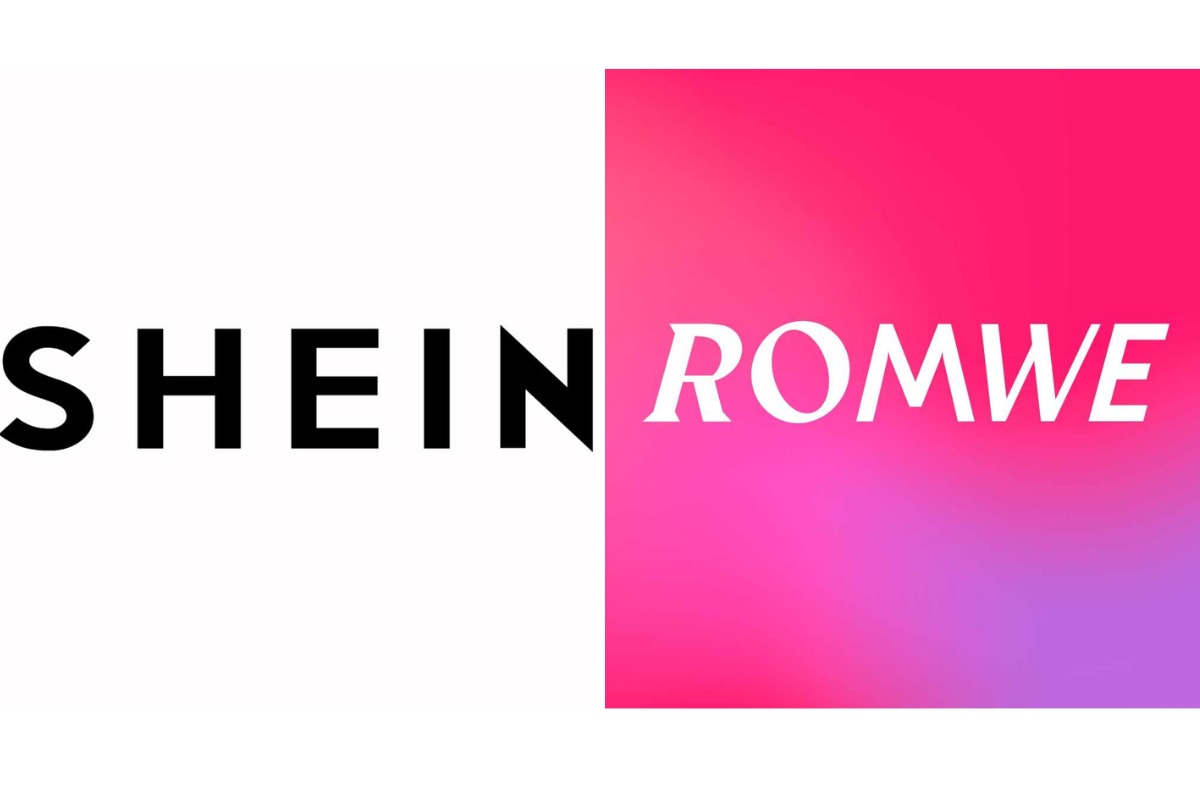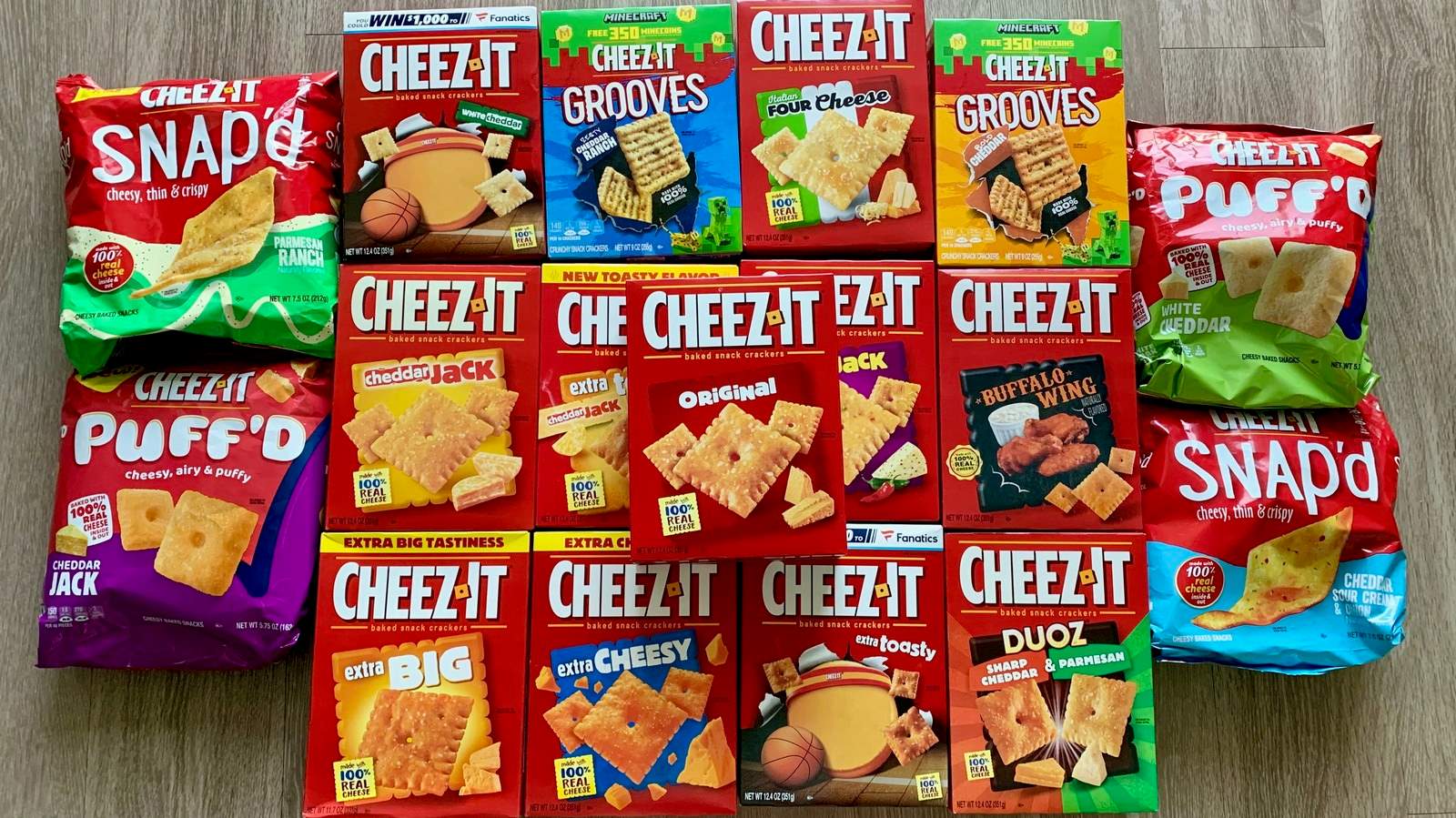Home>Business and Finance>The Shocking Truth: Romwe And Shein – Are They Secretly The Same Company?


Business and Finance
The Shocking Truth: Romwe And Shein – Are They Secretly The Same Company?
Modified: March 3, 2024
Discover the truth about Romwe and Shein. Uncover the business and finance secrets behind these popular fashion brands.
(Many of the links in this article redirect to a specific reviewed product. Your purchase of these products through affiliate links helps to generate commission for Noodls.com, at no extra cost. Learn more)
Table of Contents
Introduction
In the world of fast fashion, Romwe and Shein have emerged as prominent players, offering trendy clothing and accessories at budget-friendly prices. With their extensive online presence and widespread popularity among fashion enthusiasts, these brands have garnered significant attention. However, amidst the allure of their affordable and stylish offerings, a cloud of mystery looms over the relationship between Romwe and Shein. As consumers delve deeper into the fashion industry, an intriguing question has surfaced: Are Romwe and Shein secretly the same company?
This inquiry has sparked a wave of curiosity and speculation, prompting consumers to scrutinize the connection between these two fashion giants. As individuals seek transparency and authenticity in their purchasing decisions, unraveling the truth behind the potential affiliation of Romwe and Shein has become a compelling pursuit. To shed light on this matter, it is imperative to embark on a journey through the history, business practices, and customer experiences associated with these renowned fashion brands. By delving into these facets, we aim to uncover the reality behind the perceived relationship between Romwe and Shein.
History of Romwe and Shein
Romwe and Shein have both made significant strides in the fashion industry, captivating the attention of style-conscious individuals worldwide. The history of Romwe dates back to its establishment in 2009, with a focus on providing young, trendy fashion pieces at affordable prices. Over the years, Romwe has expanded its product range, offering an extensive selection of clothing, accessories, and footwear, catering to diverse fashion preferences.
On the other hand, Shein, formerly known as SheInside, emerged onto the fashion scene in 2008, with a similar mission of delivering fashion-forward apparel to a global audience. With a keen eye for the latest trends and a commitment to affordability, Shein swiftly gained traction among fashion enthusiasts, solidifying its position as a go-to destination for budget-friendly and stylish wardrobe essentials.
Both Romwe and Shein have leveraged the power of e-commerce and social media, harnessing digital platforms to showcase their products and engage with their target demographic. Through strategic marketing initiatives and a strong online presence, these brands have cultivated a loyal following, attracting customers with their diverse product offerings and competitive pricing.
As Romwe and Shein navigated the dynamic landscape of fast fashion, they garnered attention for their ability to swiftly adapt to evolving style trends and consumer preferences. This agility enabled them to stay ahead in an industry characterized by rapid changes and fleeting fashion fads. With an emphasis on accessibility and a finger on the pulse of the latest fashion movements, Romwe and Shein carved out their niches in the competitive realm of online fashion retail.
The parallel trajectories of Romwe and Shein in revolutionizing the accessibility of fashion have positioned them as formidable forces in the industry. Their histories reflect a commitment to offering affordable, on-trend clothing and accessories to a diverse global audience, setting the stage for their continued expansion and influence in the fashion landscape.
Are Romwe and Shein the Same Company?
The question of whether Romwe and Shein are the same company has sparked widespread speculation and curiosity among consumers and industry observers. While both brands have garnered significant attention for their affordable fashion offerings and extensive online presence, the potential connection between them has remained shrouded in mystery.
Upon initial examination, Romwe and Shein appear to operate as distinct entities, each with its own branding, product lines, and marketing strategies. However, as consumers delve deeper into the intricate web of the fashion industry, compelling evidence has surfaced, suggesting a potential affiliation between the two brands.
Despite maintaining separate websites and distinct brand identities, Romwe and Shein share striking similarities in their product offerings, pricing strategies, and marketing tactics. The parallels in their product assortments, promotional activities, and even website layouts have fueled speculation about a hidden relationship between the two entities.
Moreover, astute consumers have noted that certain items available on Romwe's website bear a striking resemblance to products featured on Shein's platform, raising questions about potential overlaps in their supply chains and manufacturing processes. Additionally, the uncanny resemblance in their packaging and promotional materials has further fueled the conjecture surrounding their association.
Furthermore, industry insiders and keen observers have pointed out that Romwe and Shein share common corporate addresses and business registrations in certain regions, hinting at a deeper connection beyond what meets the eye. These findings have added another layer of complexity to the ongoing debate about the true nature of the relationship between these two fashion powerhouses.
While Romwe and Shein have not officially confirmed or denied any direct affiliation, the mounting evidence and compelling observations have prompted consumers to scrutinize the intricacies of their operations and the potential implications for their purchasing decisions.
As the exploration into the potential connection between Romwe and Shein unfolds, consumers are left to navigate the blurred lines between these two influential fashion brands, prompting a deeper evaluation of their business practices, ethics, and the implications for the fashion industry as a whole.
Evidence of Connection
The potential affiliation between Romwe and Shein has sparked a wave of speculation, prompting consumers and industry observers to scrutinize the intricate web of evidence that hints at a hidden connection between these two fashion giants.
One of the most compelling pieces of evidence pointing to a potential link between Romwe and Shein lies in the striking similarities observed across their product offerings. Astute consumers have noted that numerous items featured on Romwe's website bear a remarkable resemblance to products showcased on Shein's platform. From clothing designs to accessory styles, the parallels between their offerings have raised eyebrows and fueled discourse about the potential convergence of their supply chains and manufacturing processes.
Moreover, the pricing strategies employed by Romwe and Shein have further fueled the speculation about their potential association. Both brands are renowned for their budget-friendly pricing, offering fashion-forward pieces at remarkably affordable rates. This shared approach to pricing, coupled with the uncanny resemblances in their product assortments, has contributed to the mounting evidence suggesting a deeper connection between the two entities.
In addition to the striking similarities in their product offerings and pricing strategies, Romwe and Shein share noteworthy resemblances in their marketing tactics and promotional activities. Observant consumers have identified overlapping promotional campaigns, social media strategies, and even website layouts, raising questions about the potential coordination of their marketing efforts and the underlying motivations behind such synchronicity.
Furthermore, a closer examination of corporate registrations and business addresses has revealed intriguing findings that further fuel the discourse surrounding the potential connection between Romwe and Shein. In certain regions, both brands share common corporate addresses and business registrations, hinting at a deeper level of association that transcends their outwardly distinct brand identities.
As the body of evidence pointing to a potential connection between Romwe and Shein continues to grow, consumers are left to grapple with the implications of this potential affiliation on their purchasing decisions and perceptions of these fashion brands. The mounting observations and compelling parallels have ignited a fervent quest for transparency and authenticity, prompting individuals to delve deeper into the intricate tapestry of the fashion industry to unravel the truth behind the perceived relationship between Romwe and Shein.
Business Practices and Ethics
The exploration of the potential connection between Romwe and Shein extends beyond the realm of product similarities and corporate registrations, delving into the realm of business practices and ethics. As consumers and industry observers navigate the intricacies of the fashion industry, the scrutiny of the operational frameworks and ethical considerations of these prominent brands has emerged as a focal point of discussion.
One of the key areas of interest pertains to the transparency and accountability of Romwe and Shein in their dealings with consumers, suppliers, and stakeholders. The emergence of concerns regarding the potential affiliation between these brands has prompted a closer examination of their communication practices, supply chain transparency, and commitment to ethical sourcing and manufacturing processes.
Moreover, the ethical implications of the pricing strategies employed by Romwe and Shein have sparked discourse about fair labor practices, sustainable production methods, and the broader impact on the global fashion ecosystem. As consumers increasingly prioritize ethical considerations in their purchasing decisions, the alignment of business practices with ethical standards has become a pivotal aspect of evaluating the integrity of fashion brands.
Furthermore, the implications of potential shared business practices and operational frameworks between Romwe and Shein have prompted discussions about the broader ethical landscape of the fast fashion industry. The environmental impact of mass production, the treatment of workers in manufacturing facilities, and the responsibility of brands in promoting sustainable and ethical practices have come to the forefront of the conversation.
In navigating the complex terrain of business practices and ethics, consumers are seeking greater transparency, accountability, and a commitment to ethical standards from fashion brands. The potential connection between Romwe and Shein has catalyzed a deeper evaluation of the ethical underpinnings of these brands, prompting individuals to scrutinize the alignment of their operational approaches with ethical considerations.
As the discourse surrounding the potential affiliation between Romwe and Shein continues to unfold, the ethical implications and business practices of these brands remain at the forefront of consumer scrutiny, underscoring the importance of transparency, accountability, and ethical responsibility in the fashion industry.
Customer Experiences and Reviews
The realm of customer experiences and reviews serves as a crucial vantage point for discerning the true essence of any brand. In the case of Romwe and Shein, the aggregation of customer feedback and experiences offers valuable insights into the perceived quality of products, customer service standards, and overall satisfaction with the brand experience.
As consumers navigate the digital landscape of fashion retail, a myriad of reviews and testimonials pertaining to Romwe and Shein have surfaced, reflecting a diverse spectrum of perspectives and sentiments. While some individuals have expressed satisfaction with the affordability and trendy offerings of both brands, others have raised concerns about product quality, shipping times, and customer service responsiveness.
Notably, a recurring theme in customer reviews revolves around the perceived similarities in product quality and customer service experiences between Romwe and Shein. Numerous consumers have drawn parallels between their interactions with both brands, citing resemblances in product packaging, shipping durations, and the handling of returns and exchanges. This convergence of experiences has fueled discussions about the potential interconnectedness of the two entities and its implications for consumer perceptions.
Furthermore, the aggregation of customer experiences and reviews has shed light on the nuanced considerations that influence purchasing decisions. While some individuals prioritize affordability and trendiness, others place emphasis on product longevity, customer support efficacy, and ethical considerations. This diversity of perspectives underscores the multifaceted nature of consumer preferences and the varying degrees of importance placed on different facets of the brand experience.
In addition to individual testimonials, the emergence of social media discussions and community forums has provided a platform for consumers to exchange insights and experiences related to Romwe and Shein. These digital spaces have facilitated candid conversations about product comparisons, sizing accuracy, and the overall value proposition offered by the two brands, contributing to a collective tapestry of consumer sentiment and feedback.
As consumers navigate the landscape of fast fashion and grapple with the potential connection between Romwe and Shein, the amalgamation of customer experiences and reviews serves as a critical compass for shaping perceptions and informing purchasing decisions. The convergence of diverse viewpoints and firsthand accounts offers a multifaceted lens through which individuals can evaluate the authenticity, reliability, and resonance of these fashion brands in their lives.
The exploration of customer experiences and reviews illuminates the dynamic interplay of consumer sentiments, brand perceptions, and the evolving landscape of fashion retail, underscoring the significance of individual experiences in shaping the broader narrative surrounding Romwe and Shein.
Conclusion
In the intricate tapestry of the fashion industry, the potential connection between Romwe and Shein has emerged as a captivating enigma, prompting consumers, industry observers, and fashion enthusiasts to embark on a quest for transparency and authenticity. The exploration of their histories, business practices, customer experiences, and compelling evidence has unveiled a complex web of parallels and conjecture, igniting fervent discussions about the true nature of their relationship.
As the threads of evidence intertwine and the discourse surrounding Romwe and Shein continues to unfold, it becomes evident that the potential affiliation between these two fashion powerhouses transcends mere speculation. The striking similarities in their product offerings, pricing strategies, marketing tactics, and corporate registrations have painted a compelling portrait of interconnectedness, prompting individuals to navigate the blurred lines between these prominent brands.
Moreover, the ethical considerations and business practices associated with Romwe and Shein have catalyzed a deeper evaluation of the broader implications of their potential affiliation. The alignment of operational frameworks with ethical standards, transparency in supply chain practices, and the responsibility of fashion brands in promoting sustainable and equitable practices have emerged as pivotal focal points in the ongoing discourse.
The aggregation of customer experiences and reviews has further enriched the narrative, offering a multifaceted lens through which individuals can discern the resonance and authenticity of Romwe and Shein in their lives. The convergence of diverse perspectives, testimonials, and social media discussions has underscored the nuanced considerations that influence purchasing decisions, shaping the broader narrative surrounding these fashion brands.
As the exploration into the potential connection between Romwe and Shein unfolds, consumers are left to navigate the implications of this potential affiliation on their perceptions, purchasing decisions, and the broader ethical landscape of the fashion industry. The pursuit of transparency, accountability, and ethical responsibility remains at the forefront of the conversation, underscoring the significance of these values in shaping the evolving dynamics of fashion retail.
In essence, the potential affiliation between Romwe and Shein serves as a compelling reflection of the complexities inherent in the fashion industry, prompting individuals to seek clarity and authenticity in their interactions with these influential brands. While the mystery surrounding their relationship persists, the exploration of their histories, business practices, and customer experiences has illuminated the multifaceted nature of consumer perceptions and the evolving landscape of fashion retail, underscoring the enduring quest for transparency and integrity in the realm of fast fashion.














